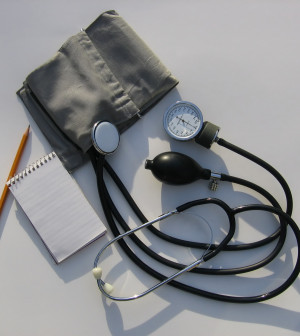- Skip Storing This Everyday Product in the Fridge Door
- Green Tea + B3 Pairing May Boost Brain Health
- Navigating Your Midlife Crisis: Embracing New Possibilities
- City Raccoons Showing Signs of Domestication
- Mapping the Exposome: Science Broadens Focus to Environmental Disease Triggers
- One Week Less on Social Media Linked to Better Mental Health
- Your Brain Changes in Stages as You Age, Study Finds
- Some Suicide Victims Show No Typical Warning Signs, Study Finds
- ByHeart Formula Faces Lawsuits After Babies Sickened With Botulism
- Switch to Vegan Diet Could Cut Your Greenhouse Gas Emissions in Half
Less-Invasive Repair of Aortic Aneurysm Better in Short Term: Study


Minimally invasive surgery to repair an abdominal aortic aneurysm appears to boost survival in the short term more than traditional surgery does, but that advantage diminishes over time, researchers report.
An abdominal aortic aneurysm is a bulging weak spot in the aorta, the large artery that takes blood away from the heart and toward the abdomen, pelvis and legs. If not fixed, it can burst unexpectedly and cause substantial bleeding that can be fatal. When detected before bursting, doctors can repair the weak spot with traditional surgery (“open repair”) or by inserting a device through a small opening to apply a patch on the aorta — called an endovascular repair.
About 5 percent of men and 1.5 percent of women over 60 may have an abdominal aortic aneurysm, especially those who smoke or have a family history of aneurysm, said study author Dr. Marc Schermerhorn, an associate professor of surgery at Harvard Medical School in Boston.
However, most people don’t know they have it because there aren’t any warning signs, so it is typically discovered during an ultrasound or CT scan that is done for another reason, Schermerhorn said. Oftentimes, “they don’t know they have it until it ruptures,” he added.
In the study, endovascular repair beat open repair on several counts, the researchers said.
“We see a substantial early benefit to endovascular repair over open repair,” said Schermerhorn.
Endovascular repair has a lower risk of death around the time of surgery, lower complication rates and a shorter hospital stay, he explained.
“That survival benefit persists for at least three years,” Schermerhorn said. “However, the endovascular approach does have a higher rate of the need for a second procedure to maintain the repair.”
The open operation has more complications related to the surgery, including scar tissue causing obstruction of the bowel, Schermerhorn explained.
However, after eight years, the risk of a rupture was more than 5 percent for those who had the endovascular repair. “That raises a flag of caution,” Schermerhorn said. “I don’t think it’s enough to opt for an open repair, because there is a three-year period where survival is much better with an endovascular repair.”
Schermerhorn said that after either procedure patients need to have an annual evaluation of the repair so that any problems can be dealt with before complications occur.
The report was published July 23 in the New England Journal of Medicine.
To discover which procedure worked best, Schermerhorn and his colleagues collected data on nearly 40,000 Medicare patients who had had either open repair or endovascular repair of an abdominal aortic aneurysm. These repairs occurred from 2001 through 2008, and the patients were followed through 2009.
Overall, 1.6 percent of the patients who had endovascular repair died around the time of the procedure, compared with 5.2 percent of those who underwent open repair. The number of patients who died around the time of an endovascular procedure continued to decline from 2001 to 2008. In addition, more patients opted for endovascular repair over that period, the researchers found.
In terms of survival, more patients who had endovascular repair lived during the three years after the procedure than those who had open repair. After three years, the rate of survival was similar for both, the researchers reported.
However, after three years, complications related to the aneurysm were more common after endovascular repair. In the same period, complications related to the surgery itself were more common among those who underwent open repair, the investigators found.
During the eight years of follow-up, rupture of the aneurysm occurred in about 5 percent of patients after endovascular repair, compared with about 1 percent of patients after open repair.
Two years after endovascular repair, the need to adjust the repair decreased from about 10 percent among patients who had the procedure in 2001 to about 9 percent for those who had the repair in 2007, the researchers added.
Dr. Gregg Fonarow, a professor of cardiology at the University of California, Los Angeles, said, “These findings provide important insights into the real-world effectiveness of these two approaches, and suggest similar findings to those seen among the more selective patients enrolled in randomized trials.”
For Schermerhorn, the data favors endovascular repair.
“For most patients, the endovascular approach seems to be safe and effective, and preferable to open surgery,” he said.
More information
Visit the Society of Thoracic Surgeons for more on aortic aneurysms.
Source: HealthDay
Copyright © 2025 HealthDay. All rights reserved.










